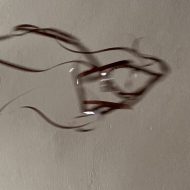- What does the Loop Playback option do? What is the minimum loop length required for loop playback?
Loop playback allows you to repeat your selection continuously, looping from the end of the selection back to the start without interruption. Loop playback requires a selection at least 0.5 seconds in length
2. What happens when you delete a clip from between two existing clips in Shuffle mode? What happens when you do the same thing in Slip mode?
Subsequent clips on the track will move to the left to close up the space. i.e In Shuffle mode when you move or place clips on a track, their placement is constrained by other clips. Editing a clip in Slip mode has no affect on subsequent clips, unless the edit courses clips to overlap in which case the underlying clip is trimmed rescued by the overlying clip.
3. What happens when you move a clip whose start point falls between Grid lines in Absolute Grid mode? What happens when you do the same thing in Relative Grid mode?
If a clips start point falls between gridlines, moving the clip will snap its start time to the nearest grid line. In Relative Grid mode, if the clip’s start point falls between gridlines, the clip will move in grid increments, preserving is offset from the grid.
4. How can you configure the size of the Grid increments used in Grid mode? How can you display or hide the Grid lines in the Edit window?
1. Click the GRID VALUE pop-up selector in the toolbar area of the Edit window.
2. From the GRID VALUE pop-up menu choose an appropriate timescale. Click at the head of the currently selected main Timebase ruler or click on the Grid indicator in the toolbar.
5. Name some common editing commands provided in Pro Tools.
Cut, Copy, Paste, Clear (delete), Duplicate, Repeat
6. What are some operations that the Separate Clip command can be used for?
1. To split a clip into two separate clips at the insertion point.
2 . To separate a selection from a large clip from the material on either side.
3. To create multiple new clips from a selection dividing the selection of specified intervals or events.
7. What happens when you click on a clip with the Grabber tool in Spot mode?
The Spot dialogue box will appear
8. What is the Trim tool used for? What modifier can you use to reverse the direction of the Trim tool?
The Trim tool can be used to dynamically adjust the length of a clip. By trimming the head or tail of an audio clip, you can eliminate unwanted material the proceeds of follows the portion that you want to retain. opt to reverse.
9. What is the Nudge value used for? In what Edit modes can the Nudge function be used?
Pro Tools allows you to adjust the placement of clips and selections in small, precise increments using the keyboard. The size of these increments, known as the Nudge value, is set much like the grid size. Nudging a clip allows you to move the clip incrementally by predefined units.
-can be used in any mode
10. What keys are used to nudge a clip or selection earlier or later on a track?
Alpha numeric plus [ + ] to move the clips later in the track, or minus [ – ] to move the clips earlier.
11. How would you go about creating a fade-out at the end of a clip? How would you go about creating a crossfade between two adjacent clips?
To create a Fade Out
1. Select the ending of a clip (shift+click on additional tracks to create fades on multiple tracks whose clips begin or end simultaneously)
2. choose EDIT > FADES > CREATE or press cmd+ F. The Fade out dialogue box will appear. Choose the desired settings in the dialogue box and clock OK. To create a Crossfade 1. Make a selection across the boundary between two clip. 2. EDIT > FADES > CREATE or press cmd+ F. The Crossfade dialogue box will open.
3. Choose the desired settings in the Crossfade dialogue box and click OK.
12. How many levels of operations can you undo in Pro Tools? What are some operations that cannot be undone?
64. Deleting tracks, closing a session and/or quitting Pro Tools, clearing audio from the Clip List, recording in Destructive Record mode (covered in advanced courses)
13. How can you display the Undo History window? What are some actions available in this window?
WINDOW >UNDO HISTORY. Multiple simultaneous undoes, multiple simultaneous redos, UNDO ALL, REDO ALL, Clear the queue.
14. What are some available options for undoing changes that are no longer available in the Undo History window? When would each option apply?
Using FILE > Revert to Saved or Restoring from session backups. If you have saved your work after the point that you may wish to restore, Revert to saved may not take you back far enough. Conversely if you have made many changes since the last save, but you need to undo only some of those changes (no longer in the undo queue), Revert to saved will take you back too far. In these cases restoring from the session backup may be a better option.

